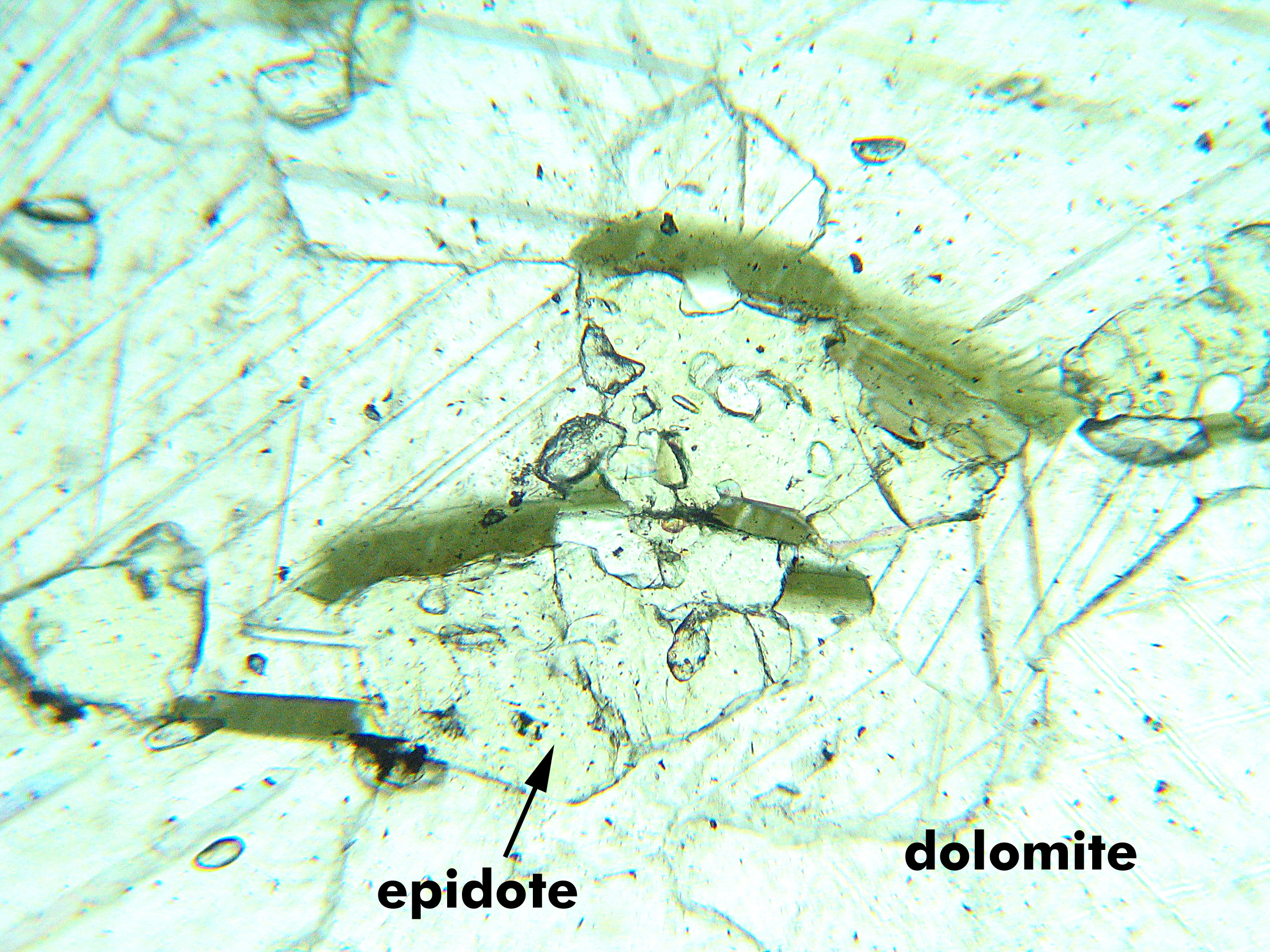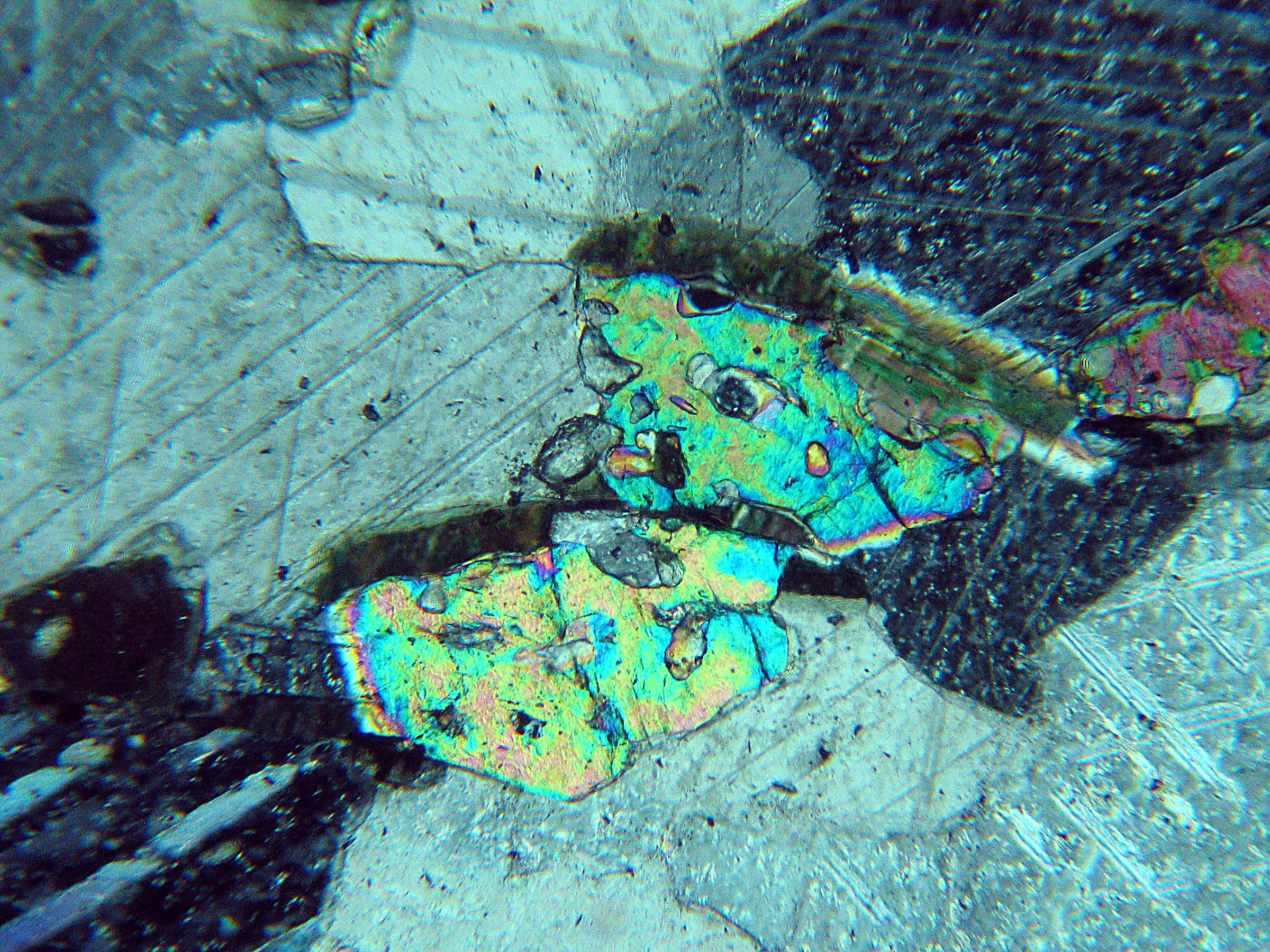Calcite (or Dolomite) in a Marble


The views above show calcite (or dolomite) in a marble from the Adirondack Mountains, New York. The field of view is about 2 mm across. Minor graphite (opaque) is also present as long skinny flakes in the carbonate.
Most of this view is one large grain showing
two sets of twins. Calcite is invariably
twinned but the twins do not show
at all orientations. The largest grain is oriented so many of
the twin lamellae are at extinction
(black in XP). Very high order interference
colors -- high order pastels -- show along the (not extinct)
twin lamellae. The large grain to
the upper left is oriented such that twins
do not show. This grain has interference
colors that are of such high order that they appear white.


